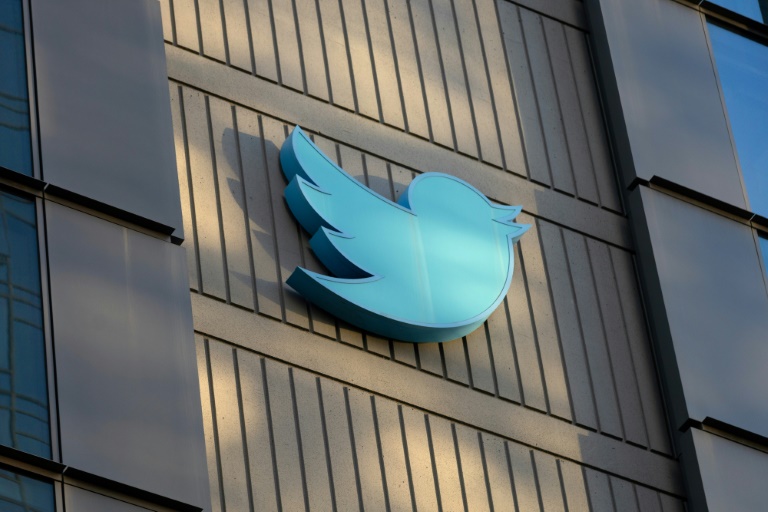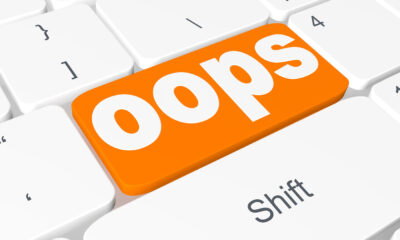SOCIAL
Twitter prank spurs unexpected scrutiny of insulin prices

Twitter: © AFP Hector RETAMAL
Anuj CHOPRA
A Twitter imposter cost a US pharmaceutical giant billions of dollars, but the viral prank triggered another unexpected crisis — a new wave of scrutiny of the high cost of its insulin.
Authentic-looking fake accounts proliferated last week after Twitter rolled out a paid verification service, the latest in a string of chaotic developments since Elon Musk’s blockbuster $44 billion buyout of the influential platform.
Among the victims was drugmaker Eli Lilly, whose stock price nosedived — erasing billions in market capitalization — after a parody account stamped with a verification tag purchased for $8 tweeted that insulin was being made available for free.
The company was forced to issue an apology for the “misleading message from a fake Lily account,” but the disinformation stirred fresh attention to a long-festering debate about high insulin prices.
“What you should *actually* apologize for is price gouging life-saving insulin,” tweeted Chicago-based human rights lawyer Qasim Rashid.
“People are dying because of your greed (and) cruelty. Apologize for that.”
Gaining traction alongside such comments was a cartoon meme with a half-elephant, half-human character riling up people to be more upset about the price of insulin than the price of gas.
“Fake Eli Lilly might be offering something closer to truth than real Eli Lilly,” Peter Maybarduk, from the nonprofit Public Citizen, told AFP.
“Parody is successful when it reveals embarrassing and widely understood truth.”
– ‘Abusive pricing’ –
In recent decades, insulin prices have soared in the United States, costing more than eight times more than in 32 comparable high-income countries, according to a 2020 Rand Corporation study.
A survey released in October by the nonprofit T1International showed that one in four respondents living with diabetes reported rationing their insulin because of the financial strain.
On Monday, which marks World Diabetes Day, dozens of advocacy groups including Public Citizen sent a letter to Congress demanding a stop to what they called insulin price-gouging.
“There’s no defense for Eli Lilly’s abusive insulin pricing,” said Maybarduk.
“It’s long past time we provide access to insulin for all, and yes –- it should be free,” he added.
The backlash against Eli Lilly showcased the real-life potential of online disinformation to trigger chaos and financial loss. The company’s stock price has marginally recovered since last week’s drop.
But in this rare instance, it brought to the fore a much-ignored public health issue.
– ‘Panic’ –
“The disinformation is not without ramification — Eli Lilly’s stock price dropped dramatically,” Al Tompkins, a senior faculty member at the Poynter Institute, told AFP.
But exploiting Twitter’s chaotic rollout of its paid verification policy, the prank managed to make “the insulin drug price conversation relevant to a lot of people.”
On Friday, Twitter disabled sign-ups for the contentious feature known as Twitter Blue, with reports saying it had been temporarily disabled to help address impersonation issues — but not before several brands took a hit.
Shares of other firms such as aerospace defence company Lockheed Martin also took a hit after being targeted by impersonators.
The prank sparked panic inside Eli Lilly, with officials scrambling to contact Twitter representatives to take it down, but the platform did not react for hours, the Washington Post reported on Monday.
By Friday, Eli Lilly executives ordered a halt to all ad campaigns on Twitter, a move that could potentially cost the platform millions of dollars.
That would mark another blow to Twitter, which laid off nearly half its workforce after Musk’s takeover as it struggles to boost revenue.
Eli Lilly and Twitter did not respond to AFP’s request for comment.
SOCIAL
Snapchat Explores New Messaging Retention Feature: A Game-Changer or Risky Move?

In a recent announcement, Snapchat revealed a groundbreaking update that challenges its traditional design ethos. The platform is experimenting with an option that allows users to defy the 24-hour auto-delete rule, a feature synonymous with Snapchat’s ephemeral messaging model.
The proposed change aims to introduce a “Never delete” option in messaging retention settings, aligning Snapchat more closely with conventional messaging apps. While this move may blur Snapchat’s distinctive selling point, Snap appears convinced of its necessity.
According to Snap, the decision stems from user feedback and a commitment to innovation based on user needs. The company aims to provide greater flexibility and control over conversations, catering to the preferences of its community.
Currently undergoing trials in select markets, the new feature empowers users to adjust retention settings on a conversation-by-conversation basis. Flexibility remains paramount, with participants able to modify settings within chats and receive in-chat notifications to ensure transparency.
Snapchat underscores that the default auto-delete feature will persist, reinforcing its design philosophy centered on ephemerality. However, with the app gaining traction as a primary messaging platform, the option offers users a means to preserve longer chat histories.
The update marks a pivotal moment for Snapchat, renowned for its disappearing message premise, especially popular among younger demographics. Retaining this focus has been pivotal to Snapchat’s identity, but the shift suggests a broader strategy aimed at diversifying its user base.
This strategy may appeal particularly to older demographics, potentially extending Snapchat’s relevance as users age. By emulating features of conventional messaging platforms, Snapchat seeks to enhance its appeal and broaden its reach.
Yet, the introduction of message retention poses questions about Snapchat’s uniqueness. While addressing user demands, the risk of diluting Snapchat’s distinctiveness looms large.
As Snapchat ventures into uncharted territory, the outcome of this experiment remains uncertain. Will message retention propel Snapchat to new heights, or will it compromise the platform’s uniqueness?
Only time will tell.
SOCIAL
Catering to specific audience boosts your business, says accountant turned coach

While it is tempting to try to appeal to a broad audience, the founder of alcohol-free coaching service Just the Tonic, Sandra Parker, believes the best thing you can do for your business is focus on your niche. Here’s how she did just that.
When running a business, reaching out to as many clients as possible can be tempting. But it also risks making your marketing “too generic,” warns Sandra Parker, the founder of Just The Tonic Coaching.
“From the very start of my business, I knew exactly who I could help and who I couldn’t,” Parker told My Biggest Lessons.
Parker struggled with alcohol dependence as a young professional. Today, her business targets high-achieving individuals who face challenges similar to those she had early in her career.
“I understand their frustrations, I understand their fears, and I understand their coping mechanisms and the stories they’re telling themselves,” Parker said. “Because of that, I’m able to market very effectively, to speak in a language that they understand, and am able to reach them.”Â
“I believe that it’s really important that you know exactly who your customer or your client is, and you target them, and you resist the temptation to make your marketing too generic to try and reach everyone,” she explained.
“If you speak specifically to your target clients, you will reach them, and I believe that’s the way that you’re going to be more successful.
Watch the video for more of Sandra Parker’s biggest lessons.
SOCIAL
Instagram Tests Live-Stream Games to Enhance Engagement

Instagram’s testing out some new options to help spice up your live-streams in the app, with some live broadcasters now able to select a game that they can play with viewers in-stream.
As you can see in these example screens, posted by Ahmed Ghanem, some creators now have the option to play either “This or That”, a question and answer prompt that you can share with your viewers, or “Trivia”, to generate more engagement within your IG live-streams.
That could be a simple way to spark more conversation and interaction, which could then lead into further engagement opportunities from your live audience.
Meta’s been exploring more ways to make live-streaming a bigger consideration for IG creators, with a view to live-streams potentially catching on with more users.
That includes the gradual expansion of its “Stars” live-stream donation program, giving more creators in more regions a means to accept donations from live-stream viewers, while back in December, Instagram also added some new options to make it easier to go live using third-party tools via desktop PCs.
Live streaming has been a major shift in China, where shopping live-streams, in particular, have led to massive opportunities for streaming platforms. They haven’t caught on in the same way in Western regions, but as TikTok and YouTube look to push live-stream adoption, there is still a chance that they will become a much bigger element in future.
Which is why IG is also trying to stay in touch, and add more ways for its creators to engage via streams. Live-stream games is another element within this, which could make this a better community-building, and potentially sales-driving option.
We’ve asked Instagram for more information on this test, and we’ll update this post if/when we hear back.
-
SEARCHENGINES6 days ago
Daily Search Forum Recap: April 19, 2024
-

 WORDPRESS7 days ago
WORDPRESS7 days agoHow to Make $5000 of Passive Income Every Month in WordPress
-

 WORDPRESS6 days ago
WORDPRESS6 days ago13 Best HubSpot Alternatives for 2024 (Free + Paid)
-

 MARKETING6 days ago
MARKETING6 days agoBattling for Attention in the 2024 Election Year Media Frenzy
-

 WORDPRESS6 days ago
WORDPRESS6 days ago7 Best WooCommerce Points and Rewards Plugins (Free & Paid)
-

 AFFILIATE MARKETING7 days ago
AFFILIATE MARKETING7 days agoAI Will Transform the Workplace. Here’s How HR Can Prepare for It.
-

 MARKETING5 days ago
MARKETING5 days agoAdvertising in local markets: A playbook for success
-

 SEO6 days ago
SEO6 days agoGoogle Answers Whether Having Two Sites Affects Rankings














You must be logged in to post a comment Login